FLIBS 2012 redo 2; Garmin, Navico, Furuno, Standard Horizon, Lumishore, ACR, Yacht Phone, & Si-Tex/Sailor
I didn’t really need an app to know that Sandy was causing trouble on the opening day of the Lauderdale Show, but I was tickled that Garmin loaned me an iPad3 so I could try BlueChart Mobile (which apparently can’t run on my iPad1). It’s beta software — as is the WiFi appliance that let’s you share tracks, routes, waypoints, and GPS with Garmin networked MFDs — and so they’d rather I didn’t write much about it quite yet. But here’s a recent and informative BlueChart Mobile YouTube video that goes with my first impression that it’s a rich and well-crafted planning app that will be popular even with folks who don’t own Garmin gear. Meanwhile, rumors that Garmin will have major product introductions at both METS and MIBS continue to gain steam…
I also used the new iPad to take photographs and tweet them during the show, but I’ve realized that Twitter entries like that don’t do the photos justice and don’t hold up over time. That’s why I’m republishing the photos in these “redo” entries, along with new ones like the shot of the new Lowrance HDS-12 Gen2 Touch below. I was glad to see that it includes the variable window sizing that I’ve found valuable on earlier HDS models and on the Simrad NSE (and that I wish was available on the Simrad NSS and other MFDs). I also like how touch has made Lowrance’s standard and extensive numeric data overlay features even more flexible and easy to use. After over 1,000 miles of intensive MFD use, I’m even more appreciative of MFD designs that let you build customized favorite screens that put graphic and numeric data just where you want it. Entry to come!
I also saw an impressive demo of Lowrance’s recently announced Insight Genesis map making system, which is now up and running online. I hope to try it soon and am also looking at the Navionics crowd-sourced soundings system, which is about to emerge from beta testing. It looks like it’s about to get a lot easier to collect depth data either for your own benefit or to share with fellow boaters…
Below is a shot of Furuno’s Matt Wood demonstrating a slew-to-cue FLIR thermal camera feature that’s coming to the NavNet TZT series. It’s very similar to the FLIR M-Series camera support added to MaxSea TimeZero in 2010, but it’s noteworthy that the relationship has continued even after FLIR became a competitor by acquiring Raymarine. However, this was FLIR’s multi-channel business strategy all along, as mentioned when we looked at Raymarines’s new slew-to-cue features.
Furuno also showed off a prototype black box TZT which is essentially the back side of TZT14 bolted to a mounting plate with added USB and HDMI ports to support two (mirrored) monitors; it will purportedly sell for less of a premium than the NavNet MFDBB does. And finally there was an interesting new GP-1850F plotter/fishfinder on display though you had to look for it. Apparently FurunoUSA hasn’t really introduced the series yet for lack of inventory, but it struck me as a nice display of long-awaited Jeppesen C-Map 4D cartography, including the auto routing I saw on a GeoNav MFD the year before. (Sorry to add that the GeoNav brand has been discontinued, though Humminbird plans to include some of its features in future models.)
Another implementation of C-Map 4D is the Standard Horizon CPN series, which again looked good in a boat show display but has received little marketing. Word is that its NMEA 2000 capabilities will soon be unleashed with a software update and then SH will push to get it out there more.
I did see more at FLIBS than just MFD screens. For instance, I finally spent some time with Lumishore underwater lighting, and came away thinking that the company is similar to Lumitec in the sense of outstanding LED technology at reasonable prices. By the way, after FLIBS I installed a sample Lumitec 6.75-inch Touch Dome interior fixture and it’s everything I’d hoped for. And now that Gizmo is down south, I feel freer to use her OceanLED Amphibians without offending someone 😉 Can’t we all just get along on that subject?
I also learned that ACR has started Survivor Club where folks who had to use their distress beacons can share their experiences. I’m hoping that there or elsewhere we’ll learn more about the details of the remarkable USCG rescue of 14 Bounty crew, during which an ACR Satellite 2 EPIRB served well.
I was pleased to learn that Si-Tex is now distributing the Sailor 6216 VHF radio in the U.S. It happens that I’ve tested this high-end radio and was very impressed with its performance and especially its best-ever “rewind” recording feature. I never wrote about it because U.S. distribution remained mysterious, but I’ll fix that soon…
And, finally, one of the busiest spots in the FLIBS electronics tent was an exhibit for the new Yacht Phone, a little $99 handset meant for use when your smartphone should stowed in a safe place…or for use after your good phone gets dunked 😉 I have a test unit, so more to come.


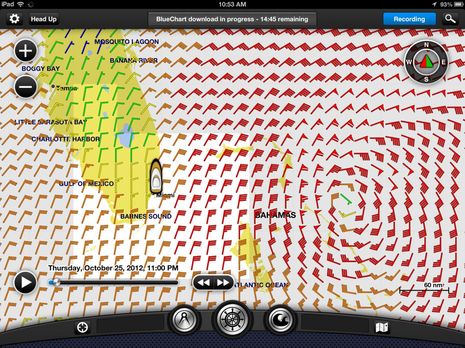
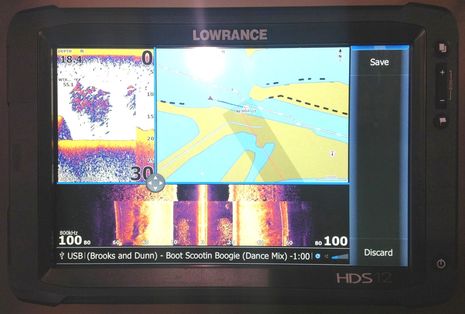
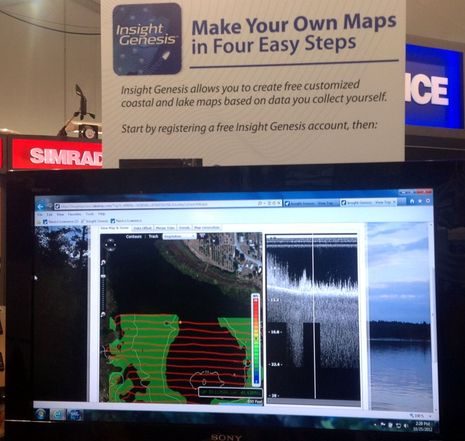
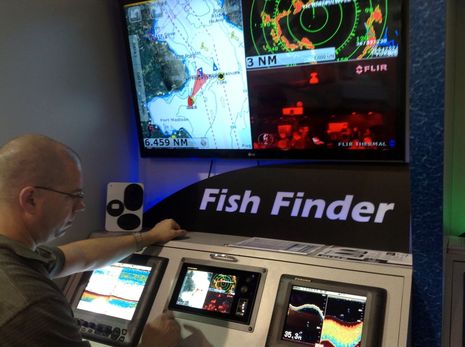
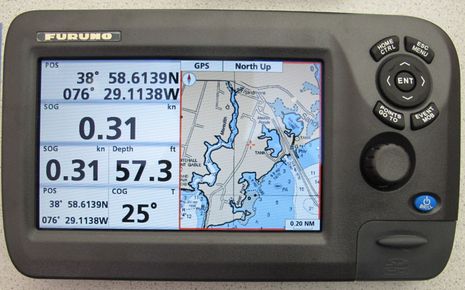

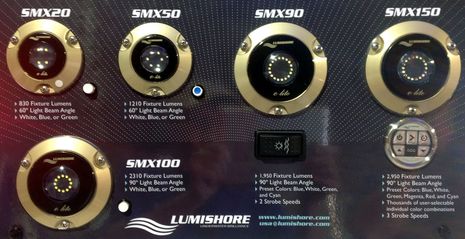
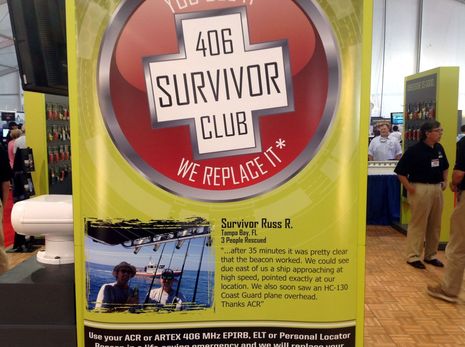
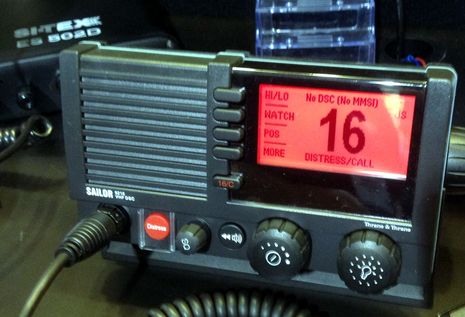
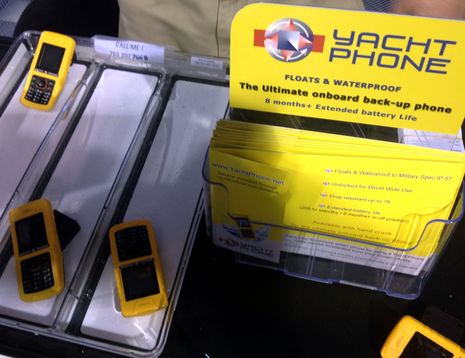



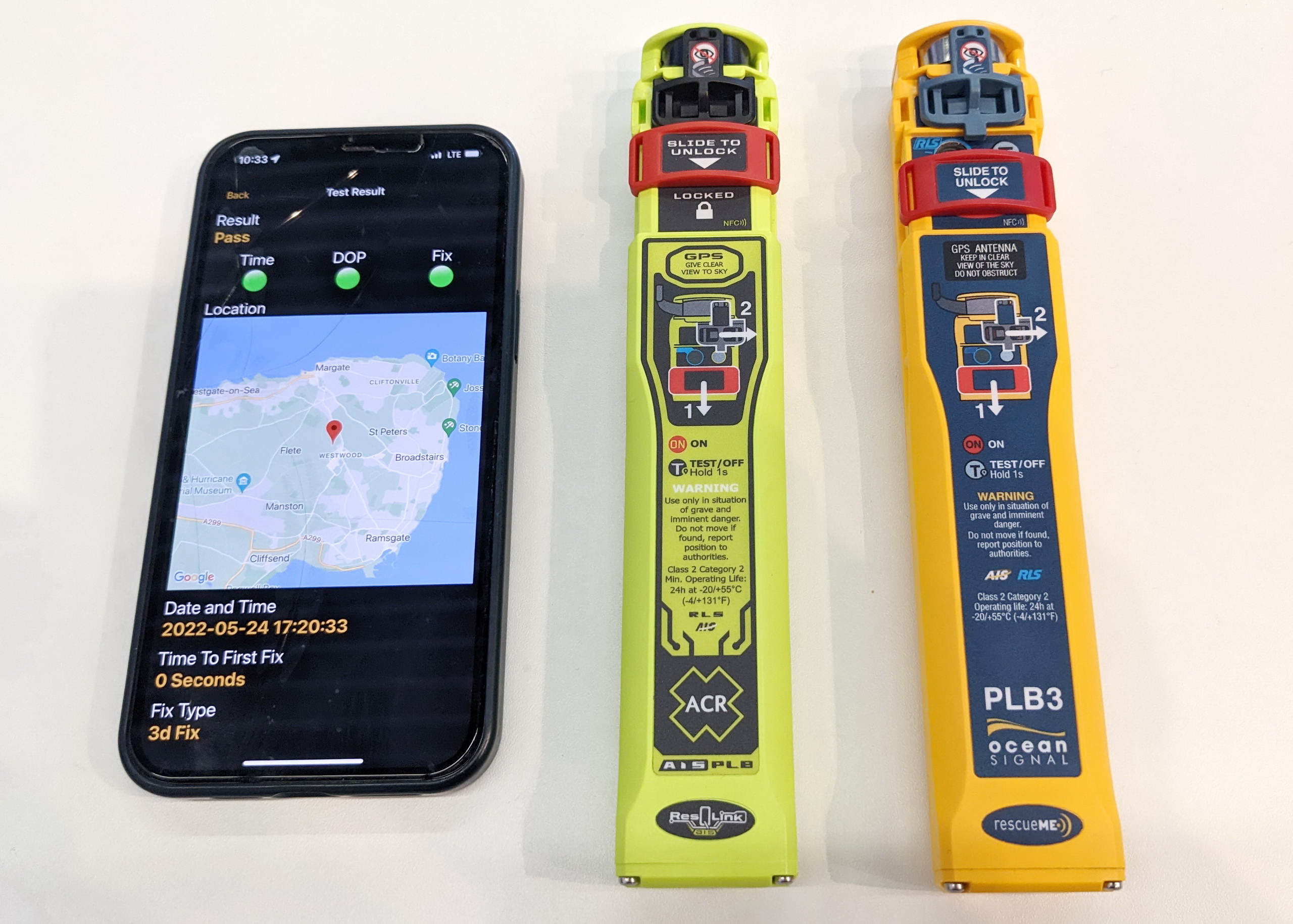







Hi Ben. Great update. What was Furuno showing for TZT black box controls? Was it connected to a USB touch screen display like those from Elo? Or did it have a remote keypad like the MFDBB’s control unit?
Thanks!
Thanks, Adam, but I’m afraid I didn’t get all the detail you’d like. I know that TZT BB has six USB ports with the intention that three are available for each display station. One of those is needed to transmit the touch commands to a third party multi-touch screen like KEP’s and I believe another is used for a little remote SD card and power button box which leaves the third for wireless mice or maybe a Furuno keyboard. Hopefully someone at Furuno will pipe up with corrections or specifics.
Interesting, thanks. Will be curious what’s involved with swapping out a TZTBB for an MFDBB. Our current touch screen is USB but not multitouch, so that’s one thing. And I wonder if the MCU will be compatible with the TZTBB. Hope Furuno can weigh in.
Hi I’m furunodan and work for Furuno UK.
The outputs to the screens are DVI-D and so far we in the uk have tested Elo multi touch screens, acer touch screen, neovo multi touch screens and FURUNO Japan have tested the hatteland x series touch screens. If your dash is out of reach our mu series monitors will provide an excellent display without touch, this would require a mouse, tracker ball or keyboard mouse combined via USB.
Of course the tztbb will still have wifi so can be controlled from an iPad.
We will also be releasing version two of the Tzt software in the next month or so.
I hope this helps. I will attending mets and I’ll get lots of photos and videos and put them up on our Facebook and YouTube pages search furunodan.
Dan Conway
My bad: Apparently GMPCS has been selling the Sailor 6216 Class D VHF all along. They also carry Sailor’s other high-end radios:
http://www.gmpcs-us.com/Marine-Satellite-Communications.htm
Hi Adam,
The MCU will not be compatible, the TZTBB will come supplied with a power button and SD card reader in a 1 DIN sized switch box* (size to be finalized soon).
As for Re-fit options from NN3D to TZT the physical box is smaller if you have a hub installed your existing Ethernet network should be compatible. (You will need a PSU012 to power the radar).
As with all TZT installations you will need NMEA2000 run to each unit and your devices will need to be either NMEA2000 or install our NMEA0183 to NMEA2000 converter.
The other issue is if you run your current NavNet3D MFD BB in extended desktop mode (as in you have two screens which have different images on, radar on one and chart on the other) you might think about installing 2 x TZTBB’s.
Here in the UK upgrades from NN3D to TZT qualify for chart linking for purchased charts, so they will not need to be re-purchased.
Screen resolutions supported are: 1280 * 720, 1280 * 800, 1280 * 960, and 1280 * 1024. As long as your touch screens are Windows 7 compliant and do not need separate drivers installed they should be compatible however I personally would check first.
As an aside the “GP1850/F” I the GP1870F and contains our excellent Digital Fish Finder, Bottom (ground) discrimination and ACCU-Fish technology. More info can be found here: http://furuno.com/special/en/gp1670f_1870f/index.html
I think that’s everything. I have a short video of the GP products which I will upload to YouTube once I have finished editing it all together.
Have a good day
Dan Conway
@Dan, thanks for your detailed response. I have a few more questions (that’s your reward for being helpful!):
– Can the TZT and NN3D MFDs live on the same network?
– So the TZT has no 0183 connection? That means I’ll need to do AIS conversion for my FA150.
– Do you know if the TZTBB has been priced yet in the U.S.?
– Our touchscreen is an Elo Touch 1939L. Looking at their drivers page it’s unclear if the HID drivers are required or optional.
Thanks again!
This is horrible news for me that garmin’s new app won’t run on the original iPad. I’ve dedicated my original iPad as my second navigation device, mounted in the nav station running a myriad of apps. Don’t understand why it won’t be supported as I currently have iNavx, charts and tides, eSeachart and other marine related apps running just fine on the old device. I was truly looking forward to the new Garmin offering, but will have to pass if it cannot run on ipad1.
The mention that Standard-Horizon may soon have a NMEA-2000 interface in their chart plotter product is encouraging. I am looking forward to the day when Standard-Horizon radios have a NMEA-2000 interface. I hope it is coming in the near future.
Tony, the reason your tablet is not supported is as simple as the business model of planned obsolescence. Little to do with basic functional ability. Someone just decided you really need faster functions and maps on a slightly improved screen. Used iPads are cheap on ebay anyway. What is funny is that the major companies business models will probably get a reality check soon when someone, (can you spell Chinese), comes up with a daylight readable, water proof tablet display that is wirelessly connected to a myriad of inexpensive sensors and routed through an inexpensive upgradeable CPU and storage module. This has already happened to some DIY’ers, so it really is coming down to software innovation. The bolted in proprietary navigation units will go the way of the tube tv in the not to distant future.
Does your floating, solar and saltwater chemical charging, waterproof tablet have a EPIRB/PLB? VHF/Cell phone? Can you play Angry Birds while waiting for the Coast Guard after your boat sinks? Can you geo-fence locate your boat from anywhere? You will, and much more. It really is not rocket science to make it happen. Most of it already has. When it does happen it is going to make the current planned obsolescence, fixed unit business model increasingly hard to sustain.
That sounds terrific, Capt John, but I don’t see much evidence of it in the real world. I think that the critical bit you miss is that many important marine sensors like radar and sonar are not commodity items and show no sign of becoming “a myriad of inexpensive sensors”.
Back in the heyday of PC navigation on medium-size boats there was similar talk about the end of dedicated marine electronics, but it sure didn’t happen. Instead, MFDs became more PC-like in the sense of multifunctionality and the ability to display charts, radar, etc. well. And PC navigation shrunk largely because it could not compete with MFD sensor connectivity and reliability. How many boats do you see with Nobeltec radar?
Looks to me like a similar thing is happening with apps phones and pads. While they can be fantastically valuable on boats, they are not taking over primary navigation and control functions and there is no clear path to that end. Meanwhile, the MFD developers are rapidly adding phone and pad integration that’s very attractive to many boaters. DIY marine electronics is very interesting, but it’s an itsy bitsy slice of the market.
PS I don’t know why Garmin Mobile can’t run on IOS 5 and the iPad 1 can’t run IOS 6, but overall I feel like I’ve gotten a heck of run from that iPad and that it will keep serving me for some time to come. That said, the iPad Mini is looking sweet.
Jim, I always ask Standard Horizon about NMEA 2000 fixed VHF sets and they always say “eventually”. I think it would have happened already except for the recession, and ditto for Icom. But it will happen.
“sensors like radar and sonar are not commodity items and show no sign of becoming “a myriad of inexpensive sensors”.” Have you checked out the latest sale pages on the Internet? Still think the systems have not become less expensive every day. More “commidity” like? The sensor for a radar and sonar would be the antenna and transducer, as I was referring to “inexpensive sensors”. You picked the two probably most expensive of the lot to make your point. How about the other dozen or so that are certainly inexpensive as compared to say three years ago. The dedicated processing unit would handle the rest. The MFD will be in your hand, not mounted in a hole in your dash/console. At most it will be surface mounted so it can go where you go. This is not as important in a wheel house, but that is not the fastest growing market for hulls afloat anymore.
“MFDs became more PC-like in the sense of multifunctionality and the ability to display charts, radar, etc.” You make my point exactly.
“And PC navigation shrunk largely because it could not compete with MFD sensor connectivity and reliability. How many boats do you see with Nobeltec radar?” I believe PC navigation has not in the least “shrunk”, but has been slowed by the availability of handy daylight readable, waterproof displays. PC navigation is certainly as reliable as any MFD and they learned their connectivity from the PC industry. Radar is only part of a navigation system, and by unit count per hull afloat, becoming a smaller part every year.
“While they can be fantastically valuable on boats, they are not taking over primary navigation and control functions and there is no clear path to that end.” Come out of that cozy wheel house and watch the medium size boat market (fastest growing segment currently) employ inexpensive hand held navigation and sensor monitoring. I could easily navigate my 1000 mile annual cruise with my current daylight readable tablet. Well unless it rains, 🙂 then I’ve got to put it in it’s baggy thingy, but when the sun comes out it does make a dandy signal mirror!
I enjoy the conversation Ben. Thanks again for all your efforts in bringing us the news and reviews. It’s a good thing that Steve Jobs didn’t listen to that DIY philosophy.
John, I’m sure I’m not the only one who’d love to see good but inexpensive marine radar scanner/processors and blackbox fishfinder processors that would work with any PC charting program, pad app or DIY systems. Please post links!
Now you are trying to be a smarty pants and it doesn’t wear well! No links until the patents have cleared. 🙂
p.s. – I thought you would be more interested in the salt water charging tablet!
Sorry, John, guess I misunderstood your post. I definitely didn’t get that you are a developer. Whenever you’re ready I’d be interested in seeing what you have, but what I know now is that the best radars and fishfinders took lots of time and money to develop and they are not for sale without complete systems.
Capt Jon is dreaming. If he thinks cheap and non reliable consumer electronics will significantly displace dedicated MFDs as the primary system control and display device.
I’m a developer too on IOS and I’d never rely on those devices. As to walking around with it in your hand. Have you actually ever been on a sail boat LOL.
The manufacturers of such sensors have no interest in supporting a DIY markets. It’s a tiny tiny part of the action. The vast majority of owners will just buy a suite of standard nav electronics and go sailing.
iThingys will play a strong part as secondary devices.
The exact same argument was pit out when PCs and laptops entered the nav market. What happened, It remained a niche sector .
So by all means use you iPad etc. but offshore in a F 8 I want an IP 65 rated strongly built unit bolted down securely that has nice big buttons
“So by all means use you iPad etc. but offshore in a F 8 I want an IP 65 rated strongly built unit bolted down securely that has nice big buttons”
Yes Dave, so would I, but the truth is that 80 to 90 percent of todays boaters will never be in that situation. When you are a developer generally you look at market and volume of sales. The volume is moving to mid-size coastal cruisers. I didn’t say I do navigate my 1000 mile annual cruise with a tablet. I said I could, and that is a sailing, open cockpit cruise. No cozy wheel house here, and at times I surely miss it :-). None of my “consumer electronics” are cheap and they certainly aren’t unreliable, but then I don’t use iOS but I do know how to spell it.
And yes I am dreaming. That is where most new and unique ideas come from. Lots of time to dream on a “snail” boat.
“The exact same argument was pit out when PCs and laptops entered the nav market. What happened, It remained a niche sector.” As I said above, it is my belief that this technology has been held back by a lack of sunlight readable and water proof devices. Also if you look at the last 12 months alone, more “consumer” electronic apps and programs for marine use have hit the market than all of the prior years combined. That is some “niche” market.
The cheap shot about spelling iOS is just that. , cheap.
Today I can buy small multifunction chart plotters at costs similar to low end android devices. These are IP 65 and sunlight readable.
No one in their right mind would run their on board electronics through a consumer device , the hang on I need to look at my AIS display , on damm my iPhones dead. ( pr the app crashed etc etc)
Sure they will play a part as secondary information display. But replace a proper marine MFD , not likely. Rugged sunlight , waterproof versions of those devices ( ie rugged mobile computers) cost actually more then most MFDs ( I made my living for years selling and writing software for such devices the the transport and logistics sectors )
DIY marine systems have a place , but they will always remain a niche.
Dave
Capt John, regarding the line “Tony, the reason your tablet is not supported is as simple as the business model of planned obsolescence.” In part you’re correct, but it overlooks the acceleration in technology, and it’s impact on our lives.
The Ipad 4 has four time the memory, a much faster processor and twice the screen resolution, at about the same price. We want the new devices because the technology and capabilities are better, and faster.
In a window of about two years, the major MFD builders, have incorporated many Ipad-esque features such as WiFI, Bluetooth,and touch screens, and even the coveted finger pinch. In addition to that vastly faster CPU’s and much more memory. All of this is driven by mass produced commercial technology such as the Ipad which drives technology costs down.
It just hasn’t been all that long since I was tickled to own a LORAN, and was delighted it actually gave me my Lat/Log position so I could manually plot my position on a chart.
My point is that technology is developing at such a tremendous speed. Commercial devices such as the Ipad should be viewed as the forerunners of what will be in our all now much closer future.
And John, “Also if you look at the last 12 months alone, more “consumer” electronic apps and programs for marine use have hit the market than all of the prior years combined. That is some “niche” market.”, you’re right.
And Ben, “I think that the critical bit you miss is that many important marine sensors like radar and sonar are not commodity items and show no sign of becoming “a myriad of inexpensive sensors.” I think you’re right also.
Great thread Ben, It often seems where you start out, is not often where you end up. What fun!
I read with intrest all the stuff about dedicated marine quality bolted down equipment. We were offshore for 8 years with laptop based mavigation system and a Furuno radar circa 1988. No problems
Two years ago we purchased a NAVNET 3D MFD with radome and GPS so we would have just that. reliability!
Well we have had crashes, useless charts which were eventually repalced after months of arguements and now a HDD Failure. Try $850 Australian for a replacement HDD. 26 month old unit! Now talk to me about reliability! I will keep my ipad very close by!.